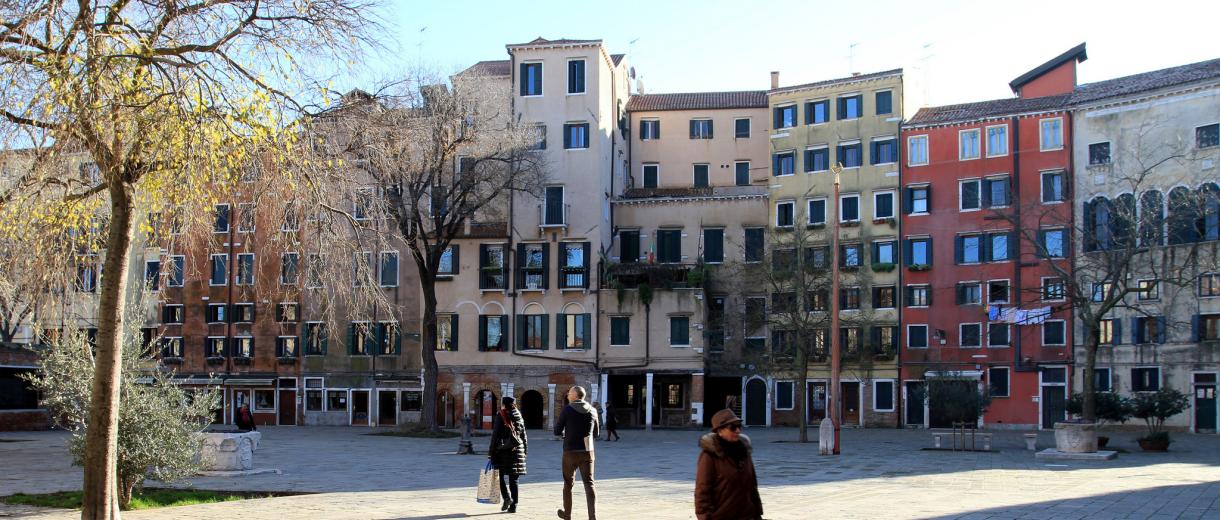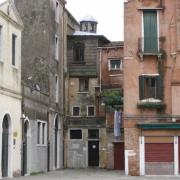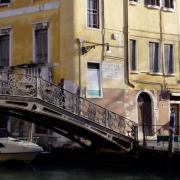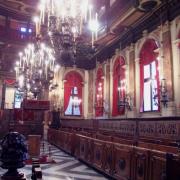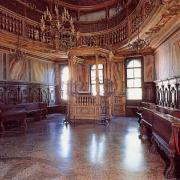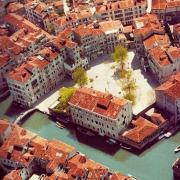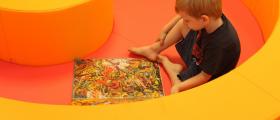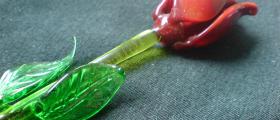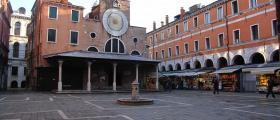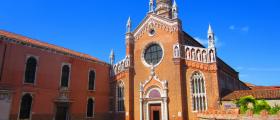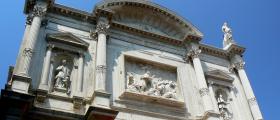The Jewish Ghetto
The ghetto is in Sestiere of Cannaregio not far from Santa Lucia railway station, it was imposed by Serenissima Republic of Venice a residence for the Jews population in 1500.
The ghetto area has high buildings and low ceilings this because they were not allowed to build anywhere else, some of the building counts even 7 floors.
The ghetto is identified in three different adjacent parts, the first, the Ghetto novo, the oldes part dated 1516 the ghetto vecchio, dated 1541 and the ghetto novissimo dated 1633.
Inside the ghetto there are 5 synagogue, easily recognizable from the domes, still house of pray for the Jews community are open to visit, the most important one is the oldest, the German Synagogue erected in 1528 by Jews originally from Germany the most numerous and the Levantine Synagogue which façade is designed by Longhenahand has two inscription, one in memory of the destruction of Jerusalem temple and the other one to commemorate the Venetian Jews died during the second world war.
Another stage not to be missed is the Museum of Jews art opened in 1955, a collection of rarity and object coming from the 5 synagogue or donations from private of all the world.
A particularity still visible is the famous Banco Rosso, one of the many pawnshop of the ghetto. The name banco rosso derivate fro the colour of the receipt (red). Reference of the banco rosso can be found also on Shakespeare comedy, the Venetian Merchant.
In the ghetto there is actually an Hebraic community that carry on traditions and religion and as well promote social and business activities. Not to be missed the chance to have a great kosher dinner.
Today Venice has a Jewish population of about 500 peoples, 30 of which live in the ghetto.
When we visit the Ghetto of Venice we enter into an extraordinary and unique district. Five synagogues are located in this small area: they represent the different Jewish ethnic groups who settled down in the Lagoon along the centuries.
An ever growing number of visitors come here from all over the world to admire the synagogues and the museum.
The Ghetto is divided in three parts:
- Ghetto Novo (New Ghetto) is the oldest part, assigned in 1516;
- Ghetto Vecio (Old Ghetto) granted in 1541;
- Ghetto Novissimo (the Newer Ghetto) granted after 1633;
The Museum of Jewish Art was opened in 1955 and has continued to enrich its collection thanks to important donations. The museum contains a collection of rare and precious textiles and silverworks (mostly from the five synagogues), and a series of Italian marriage contracts and other religious objects of foreign manifacture, privately donated to the Museum.
In the ghetto you can see 5 synagogues, the most interesting are:
- The Sinagoga Tedesca (German Synagogue, 1528) is the oldest one in Venice and it was built for the Jews of German origin who represented the larger Jew community in Venice when the Ghetto was established.
- Synagogue Levantina(1538): its external façade is by Longhena and carries two inscriptions: the first one commemorates the destruction of the temple of Jerusalem and the second one commemorates the Venetian Jews who died during the First World War.

